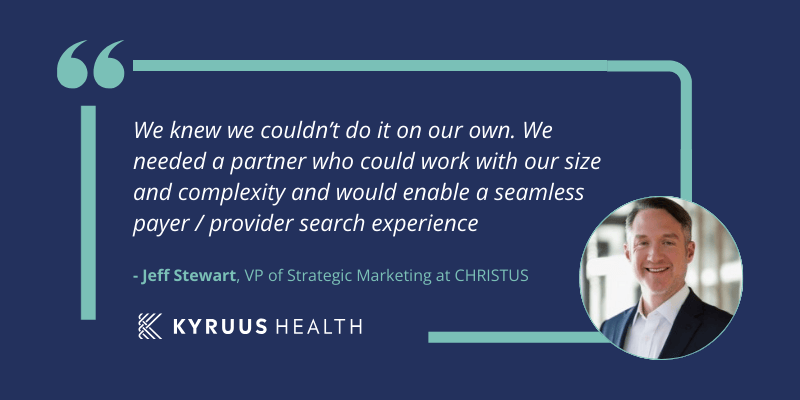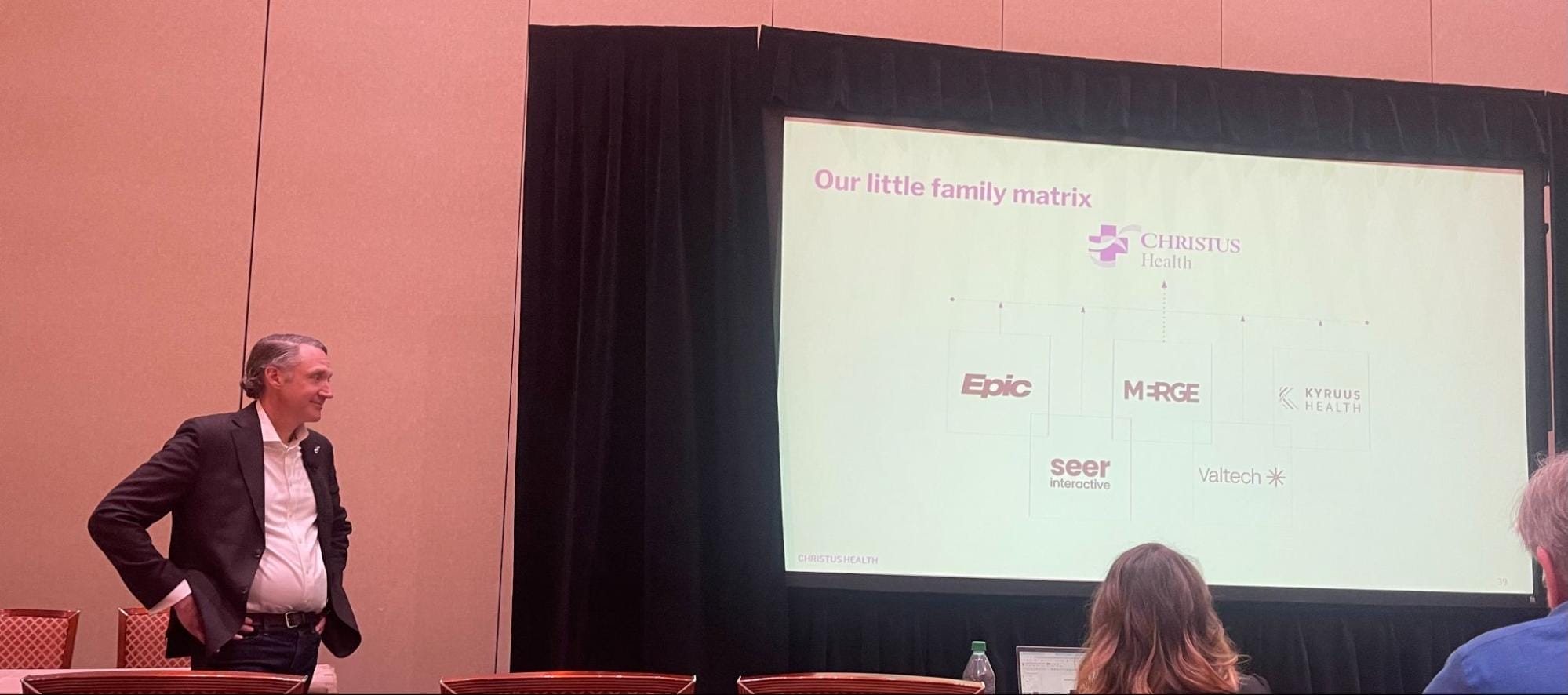Healthcare marketers from around the country recently gathered in Las Vegas at the Healthcare Marketing and Physicians Strategy Summit. The week of insightful presentations covered a myriad of topics including AI, web design, patient acquisition, and everything in between. One of the very first sessions on Thursday was centered on a topic that continued to bubble up in several other presentations. Throughout the duration of the event: cross-functional collaboration, key themes from the sessions included:
- How a partnership between Marketing and IT can spark a re-examination of patient experience strategies centered around an EHR
- What makes provider data management an important component of an organization’s digital strategy
- Why patient online scheduling requires a multi-faceted approach that includes more than just the patient portal
Marketing-IT Collaboration Spurs Re-Examination of EHR Centric Patient Experience Strategy
The session: The MarCom & IT Partnership featured leaders from Penn Medicine, Mass General Brigham, and MultiCare Health System. Their discussion circled the importance of the relationship between Marketing and IT and how it’s integral to positive patient experience. While oftentimes IT is at the forefront of technology purchasing decisions, Marketing generally has the deepest expertise around patient experience. This can cause a disconnect between strategic decisions for digital solutions that make sense from a financial perspective, but may not be optimal for consumers interacting with said solutions.
This can be especially prevalent when it comes to building experiences “in house” or utilizing functionality offered by an existing EMR—versus partnering with a vendor with deeper expertise, or a more consumer-friendly experience. The overall sentiment of the session was encouraging Marketers to get a seat at the table with IT. When these teams work closely and build a meaningful partnership, decisions can be made with both perspectives in mind.
Several other sessions echoed this sentiment about working cross-functionally, including two focused on provider data management and online patient scheduling.
Investment in Provider Data Management is Critical to Power Digital Patient Experiences
Jeff Stewart, VP of Strategic Marketing at CHRISTUS Health led a valuable session, Simplifying Complexity: A User-Centric Approach to Drive Innovation for Your Provider Directory. This session centered on Jeff’s experience with the importance of provider data management powering a successful provider search experience. He opened by telling the story of how CHRISTUS initially tried to build their own provider data management solution. The home-grown provider directory was intended to power a new and improved website, the launch of which fell below expectations. When CHRISTUS launched its new website and provider directory, they were immediately flooded with messages from frustrated clinicians noting discrepancies within their online profiles. Clearly provider data accuracy was still an issue that they needed to solve. Their conclusion was that they could not do this on their own. CHRISTUS Health would need to look for a partner to help get it done.

CHRISTUS Health intended to use the voice of the consumer as their guide while embarking on a thorough digital transformation. Jeff underscored that a project like this does not lay solely on Marketing’s shoulders. It requires ongoing input and collaboration from stakeholders across the organization—executive leadership, clinical team members, and of course, IT. CHRISTUS ultimately chose to partner with Kyruus Health to streamline provider data management, adding a key component of their tech stack along with Epic, MERGE, and a few other vendors.

Online Patient Scheduling Improves Access and Operational Efficiency for Organizations of All Sizes
While we would like to think that online patient scheduling may be table stakes for most organizations at this point, research tells us a different story. In a recent consumer survey, when asked why they did not schedule their last or most recent appointment online, 40% responded that they did not have the option to do so. This highlights a large gap in functionality that many organizations need to address to meet patient preferences for digital self-service. Consumers are looking for convenient options. When they can’t find what they’re looking for on your website, they may turn elsewhere for care.

Leaders from Cedars Sinai and Austin Regional Clinic teamed up to share each of their strategies for patient online scheduling. Their presentation, Online Scheduling Secrets: Simplify Access, Enhance Engagement, Reduce Workload, interestingly told stories that were largely the same. Incredibly, despite the fact that they are so different in size and complexity, their methods are quite similar.
While both organizations do have a patient portal that they aim to direct patients towards, they understand that there are still, and always will be, a cohort of patients who will not log in to the portal. This highlights the need for organizations to also offer an unauthenticated scheduling experience. This experience will capture both new patients, and those existing patients who struggle to remember a username and password.
The other strong similarity between these stories was the cross-functional nature of the program. A project like this cannot sit solely with IT, or Marketing. Instead, it should reach all areas of the organization, especially the clinicians. Bringing clinicians into the process early allows leaders to build trust that providers will see the right types of patients. Notably, they will not lose control of their schedules if opened to patient self-scheduling, as research shows that this is one of their top concerns. Both organizations started with smaller subsets of providers when they launched, and scaled after they were able to showcase success.
Collaborate Early and Often for an Optimal Patient Experience
If there were one key takeaway from HMPS ‘24, it would be to make sure that teams are collaborating cross- functionally early, and often, for maximum success. It is not enough to be brought in, or pull others in, once a decision has already been made. Let patient experience be the guiding force for decisions and make sure to navigate these projects jointly.


